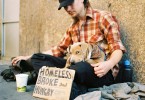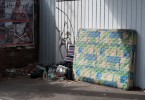Over one third of the population of Cambodia lives below the poverty line. More than 50% of the population is under 21 years old and the number of street children is rising by 20 percent every year.
In light of yesterday’s international discovery of a hidden human trafficking syndicate in the capital, Phnom Penh, the child abuse and poverty of Cambodia has suddenly been noticed by the world.
‘Love In Action’ was the farce that posed as an orphanage for abandoned street children but instead abused them and prostituted children to wealthy locals. An Australian woman, known as Ruth, is on the run from officials and currently missing, but will face Cambodian courts if found.
It is undeniable that this is a tragic, major offence against human rights, but it is not unusual for Cambodia, a nation riddled by poverty with nearly 20,000 street children in Phnom Penh alone.
Poverty compels many parents in Cambodia to send their children to orphanages or abandon them on the street. SISHA; an anti-trafficking organisation in Cambodia, estimates that 70 per cent of Cambodia’s 100,000 orphans actually have at least one parent.
Most street kids have dangerous addictions; particularly to glue sniffing, which is rife in the cities. Heroin and Ice however, are now dangerously common, and there is no age limit.
International Organistion ‘Round Square’ representative Andrew Fox says:
International “Children spend their days begging for money to pay for drugs or glue, or money for their families” he says. There are an estimated 616,023 working children aged between 5 and 17 years and 2,000 street children in Phnom Penh. A further 15,000 children, while not homeless, spend more than six hours a day scavenging and begging. “This street life is detrimental for children’s lives”. UNESCO estimates that there are 700,000 economically active children between the ages of 5 and 17 in the country. Nearly three quarters of these children have dropped out of school. “Without education they face the stark reality of living the same life as their parents; poor and hungry, susceptible to all kinds of abuse and disease”.
The estimated number of people living with HIV in Cambodia is 63,000 in 2009. In 2009 the estimate is 3,100 people died from AIDS in Cambodia. According to the National AIDS Authority (NAA), there are 80,000 orphans and vulnerable children living in Cambodia as a result of the AIDS epidemic. On average per 200 people one person has HIV in Cambodia amongst people between 15 and 49 years old which are startling figures.
It may seem as though there is little hope for the country, ranked highly on the world chart of most corrupt governments; however, some organisations are making a difference. One in particular is Happy Football Cambodia (link to website) who work with children living in extreme poverty, have been orphaned, lived on dumps or rescued from brothels or other forms of slavery. They fund a football program that offers young people an opportunity to learn the skills required to play football (soccer) and learn how to be part of a team. Program founder Paraic Grogan said he chose football because it “would attract them to the program and we could help them with other issues such as self belief.” It is a simple concept but has saved the lives of hundreds of street kids who otherwise may have been wasting time begging, sniffing glue and living in slums. They are sent to school as part of the program. They get educated, they make friends, they learn new skills, but most of all they get a new life.
Program founder and director, Paraic, is an Irish-man, based in Australia who was moved by the conditions children were living in when he visited. Paraic lived in Cambodia for eight months in 2003 and fell in love with the people and country. He helped set up the Happy School which officially opened in June 2003. When he moved back to Ireland he set up ICE (Ireland for Cambodian Education) which acts as a fund raising body for the Happy School. “Cambodia suffers greatly from poverty and in turn confronts issues of human trafficking, drugs and corruption. The most heart breaking thing for me though is seeing children on the streets with no education, begging for scraps. How can life improve when it is a vicious cycle?”
The kids are chosen in the fairest possible way “we have five partner organisations four of which are based in the capital city Phnom Penh and one on the countryside. We allocate each organisation a number of places and they select the boys and girls who would most benefit from our program”.
Paraic was the man who made history and took the Happy Football Cambodia team to the Homeless World Cup in Melbourne, in 2008. This gave a selected team of players the opportunity to travel overseas, make international friends and compete against hundreds of international players. Kids who otherwise would have never met a westerner and previously rummaged through bins for food were experiencing a whole new life.
One success story is that of Rithy Chan, who came to the Homeless World Cup as a player in Milan in 2009 and is now a staff member in the program part time. He is in the first year of his business degree and HFCA pay 2/5th of the annual fees. One of hundreds of lives changed through the program.
Team Cambodia travel to the Homeless World Cup with Paraic and their coach Vibol each year now and last year, placed in the top 12.
There are many incredible organisations working hard to reduce the effect of poverty and homelessness of children in Cambodia, HFCA is just one. It is a long journey to reduce the presence of street children in Cambodia and ultimately end poverty and child abuse. In order to reduce these risks we must be educated and aware, and most of all, compassionate.
In the words of Paraic; “I believe these programs give young people who have been the bottom of the pile all their lives self belief; that they are not worthless just because society says so. That they are just as important as anyone else and once they start to believe that, others treat them differently, with more respect. Without some self belief, it is impossible to break that cycle of poverty.”
——————————————————————————————————–
Next time you travel to Cambodia, please take care and remember that buying from or giving to street children can actually add to their problems and expose them to danger, despite your best intentions.
Here’s some advice from a group of Cambodian child-protection organisations:
1. Think carefully before giving money or food and buying from children. This not only encourages them to stay on the beaches, temples and streets and not attend school, but also places them at high risk. By giving, you are often undoing the work of trained social workers who work hard to get children off the streets, into school and back to families.
2. Use the help of trained volunteers. In Cambodia, many motodops, tuk tuk drivers, beach sellers, restaurant and hotel/guesthouse staff, internet café employees and tour operators have been trained to protect children from high risk situations. Support dedicated volunteers by using their services and encouraging them to continue to protect children.
3. Do not take the problem on yourself if you see a child at risk or in danger. Instead seek out an organisation who deals with these issues. In Cambodia, for example, there’s the ChildSafe hotlines which are managed by English-speaking Khmer social workers that can find safe services for each individual child.
4. Buy certified products instead of buying from children. There are support services whose mission is to help these children have a better future, and they can provide you with certified supplies, usually made by parents or former street youth in training. In Cambodia, you can find products at shops in Phnom Penh and Siem Reap.
5. Avoid places that tolerate prostitution. UNICEF statistics show 30-35% of sex workers in the Mekong sub-region are between 12-17 years old. By going to places that tolerate prostitution, you are supporting an environment that places children at risk.
6. Be aware of the dangers of orphanage tourism. Many orphanages do not have child protection policies in place to ensure the safety and wellbeing of the children in their care. Allowing visitors to have direct contact with children can place them at risk, especially when visitors are unsupervised. Good organisations will not allow people to drop in and have access to children.
7. Do not take children into your hotel room. It is illegal for unaccompanied children under 18 years old to stay in a hotel without their legal guardian. Instead refer children to safe services through the hotlines.











The 20,000 kids in Phnom Penh were estimated in what year?